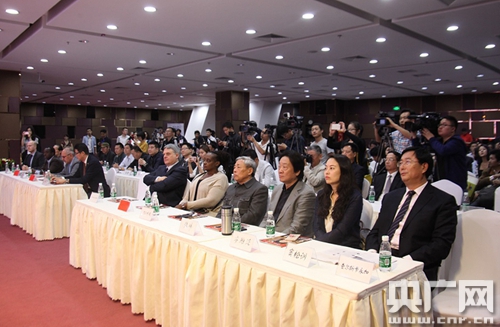After Liaoning, Who Will Be The Next Province To Connect Cities With High-speed Rail?
After Liaoning, Who Will Be The Next Province To Connect Cities With High-speed Rail?
Behind the 11 provinces across the country that have “high-speed rail connections between cities” is the profound practice of regional coordinated development and transportation-first strategies. Currently, the focus of competition among provinces has been upgraded from “whether there is high-speed rail” to “whether high-speed rail standards are high?”
Behind the 11 provinces across the country that have “high-speed rail connections between cities” is the profound practice of regional coordinated development and transportation-first strategies. At present, the focus of competition among provinces has been upgraded from "whether there is high-speed rail" to "whether high-speed rail standards are high". A more three-dimensional and efficient "China on high-speed rail" is accelerating.
The “city-to-city high-speed rail” provincial club recently welcomed a new member, Liaoning.
On September 28, the Shenyang-Changbaishan high-speed railway, a key project of the national "14th Five-Year Plan" and the main channel regional connection line of my country's "Eight Vertical and Eight Horizontal" high-speed rail network, was officially opened for operation. Fushun, Tonghua, and Baishan ended the history of being without high-speed rail. So far, Liaoning's total railway mileage has reached 6,998 kilometers, and its high-speed rail mileage has reached 2,387 kilometers, ranking 6th and 9th in the country respectively. It has become the first province in Northeast China and the 11th province in the country to achieve "city-to-city high-speed rail".
In the revitalization of Northeast China, transportation takes priority. The opening of the Shenbai High-speed Railway is not only an extension of the track, but also a reshaping of the regional economic pattern. The Shenyang-Baizhou high-speed railway, together with the Beijing-Harbin, Shenyang-Dalian, Shenyang-Dan, Changhui and other railways, forms a rapid passenger railway loop in the eastern part of Northeast China, significantly shortening the time and space distance between Liaoning, eastern Jilin and the Beijing-Tianjin-Hebei region, and accelerating the promotion of Shenyang as a hub for interconnection between the three northeastern provinces, the Beijing-Tianjin-Hebei region and the inland hinterland. This is extremely helpful in solving the dilemma of "slow flow of factors and weak industrial coordination" that has long restricted the development of the Northeast region.
The response from the cultural tourism market was the most direct. During the just-concluded National Day and Mid-Autumn Festival holidays (October 1-8), Liaoning’s cumulative number of tourists increased by 17.54% year-on-year, and its comprehensive tourism revenue increased by 18.20% year-on-year. Relying on the "speed dividend" brought by the Shenbai High-speed Railway, Fushun has received a total of 3.2884 million tourists, a year-on-year increase of 22.13%, significantly higher than the provincial average. This fully shows that optimizing the spatial structure through high-speed rail construction is an important first step in cultivating new driving forces for the revitalization of Northeast China and serving the construction of a new development pattern.
After Liaoning, who will be the next province to connect cities with high-speed rail? Guizhou is only one step away from promotion. On October 11, the last piece of the "jigsaw puzzle" of Guizhou's "city-to-city high-speed rail" - the Panzhou-Xingyi high-speed railway entered the operational test stage and is expected to be operational by the end of November. By then, Guizhou will become the second in the western region and the 12th in the country to achieve "city-to-city high-speed rail" Province, the travel time from Guiyang to Xingyi will be significantly shortened to about 2 hours, and a 1 to 2-hour high-speed rail traffic circle will be formed from Guiyang to the eight central cities of the province, which is of great significance to improving the layout of the regional railway network and promoting the interconnection between the western region of Guizhou Province and other regions.
Shandong, Zhejiang, Shaanxi and other provinces have clarified the timetable for "city-to-city high-speed rail". For example, Shandong is accelerating to complete the last piece of the "jigsaw puzzle" - the Tianjin-Weibo high-speed railway, which is expected to be completed and opened to traffic by the end of October 2027. Dongying is expected to transform from a "traffic terminal" into a "cross hub", greatly improving external accessibility and convenience, and especially forming a high-speed rail network connecting Beijing-Tianjin-Hebei, the Yangtze River Delta and the Yellow River Basin urban agglomeration.
The last piece of the puzzle in Zhejiang is the Ningbo-Zhouzhou Railway, which is expected to be completed and opened to traffic by the end of October 2028. It will end the history of no railways in Zhoushan, realize a half-hour traffic circle between Ningbo and Zhoushan, and a one-hour railway connection from Hangzhou to Zhoushan. It is of great significance for realizing the integrated and urban development of Ningbo and Zhoushan, and accelerating the in-depth integration of Zhoushan and Ningbo into the "One Belt, One Road" and the development of the Yangtze River Economic Belt.
Shaanxi is catching up and has made significant progress on many lines. According to the plan, the West Yan high-speed railway will be completed and opened to traffic in 2025, the Xikang and Xishi high-speed railways will be completed and opened to traffic in 2026, and the Kangyu-Yanyu high-speed railway will be completed and opened to traffic in 2028. By then, Shaanxi will realize the "city-to-city high-speed rail", which will effectively promote the integration of Xixian and Xianzhong and the coordinated development of the Guanzhong Plain urban agglomeration. Xi'an's radiation and influence as the national central city will be further enhanced.
Jilin is also expected to achieve promotion during the "15th Five-Year Plan" period. Currently, Jilin only has Liaoyuan without high-speed rail. Jilin Provincial Party Committee Secretary Huang Qiang emphasized during a survey in Liaoyuan in April this year that during the "15th Five-Year Plan" period, a high-speed rail network with a main speed of 350 kilometers per hour and a partial speed of 400 kilometers per hour will be built, and efforts will be made to realize "high-speed rail connecting cities to cities." In August, the work plan of the Changsi-Liaotong High-speed Railway (Liaoyuan Section) project was reviewed and approved, and is currently advancing to the project feasibility study report stage.
In the next three to five years, the “city-to-city high-speed rail” provincial clubs will usher in a new round of expansion. It is worth noting that the focus of competition among provinces is evolving from "whether there is high-speed rail" to "whether high-speed rail standards are high." For example, Jiangxi has taken the lead in realizing a "350-kilometer high-speed rail linking cities to cities", and the Chengdu-Chongqing Middle Line high-speed rail is targeting a world-leading speed of 400 kilometers per hour.
It should be pointed out that “city-to-city high-speed rail” is an important node in the development of transportation infrastructure, not the ultimate goal. Its deeper significance is to build an efficient and convenient high-speed rail network to promote the rapid flow of key elements such as talents, materials, funds and information, and inject new momentum into the tourism, logistics, modern service industries, etc., so that high-speed rail can truly become a "golden link" to promote high-quality development.
The author is a reporter from China Economic Times





